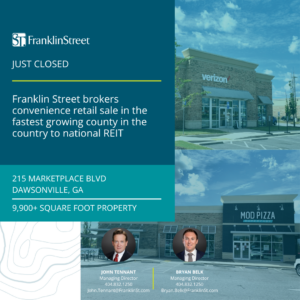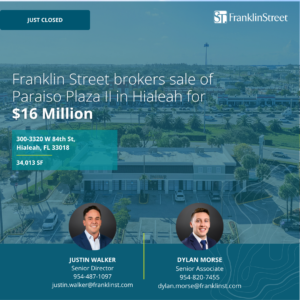For the first time since 2009, the U.S. multifamily real estate sector’s annual sales volume is flirting with falling below the preceding year’s total. Through the first three quarters of 2017, U.S. multifamily investment sales totaled a little over $104 billion, according to Real Capital Analytics (RCA), which tracks sales of multifamily properties and portfolios that are $2.5 million and greater.
Experts don’t anticipate sales activity in the last quarter of the year to be enough to surpass last year’s grand total of $160.6 billion in trade volume.
As a follow up to the cover article “Coming Back Down to Earth” from the September issue of Southeast Real Estate Business, we caught up with Darron Kattan, managing director of Franklin Street’s Tampa office, to get his take on the U.S. multifamily market. The following is an edited interview:
Southeast Real Estate Business: Thus far in 2017, multifamily investment sales are on track to be below 2016 totals. In your opinion, what is causing the decreasing volume?
Kattan: A few factors are contributing to this trend. First, the slight increase in the interest rates have given the market pause. Many sellers that have owned for a long time are sitting squarely on the sidelines in the hopes that tax reforms (particularly lowering capital gains) are going to happen and they are waiting on selling to not lose out on that savings. The market was so fluid in the last three to four years with such a high percentage of the market trading hands that there had to be a slowdown at some point as the deals can’t be value-add and flipped that quickly.
Also, target exit pricing has become so robust due to the acquisition costs that it will necessarily take time for people to grow the income in order to hit exit numbers. Finally, people are shy about selling as they don’t see any inventory to buy and don’t want to get stuck holding cash. Property owners know what they have and its producing good returns. Selling with the hopes of finding the next deal is a scary proposition these days.
SREB: In your estimation, what’s driving the uptick in demand for multifamily?
Kattan: The continued lack of single-family supply (both new inventory and existing homes for sale) is forcing people to rent who otherwise may have bought. Some other factors contributing to this trend are the continued push of millennials into renter households and the baby boomer retiree push, where we are seeing an increased percentage of renter-by-choice in that demographic. Millennials are indeed renting for longer in life, so there is less home buying, which is keeping the rental market tight.
SREB: RealPage/Axiometrics reports that the U.S. multifamily space is at full occupancy, or above 95 percent. They’ve also tracked rent growth at 2.6 percent annually. What takeaways should we have from these numbers?
Kattan: I would argue that not enough multifamily development is happening today. There is a need for affordable housing and for development one notch below the ultra-luxury product that is dominating the pipeline. It makes economic sense for developers to focus on the high-end consumers, so I would expect that trend to continue. Lenders have closed the spigot a significant amount, which will naturally slow the pipeline down. With the total lack of new construction from 2008 to 2012, we are still playing catch up on supply. If immigration laws don’t restrict population growth, I anticipate a strong tailwind pushing the industry forward with absorption numbers continuing to be at torrid paces throughout the high-growth Southeast.



